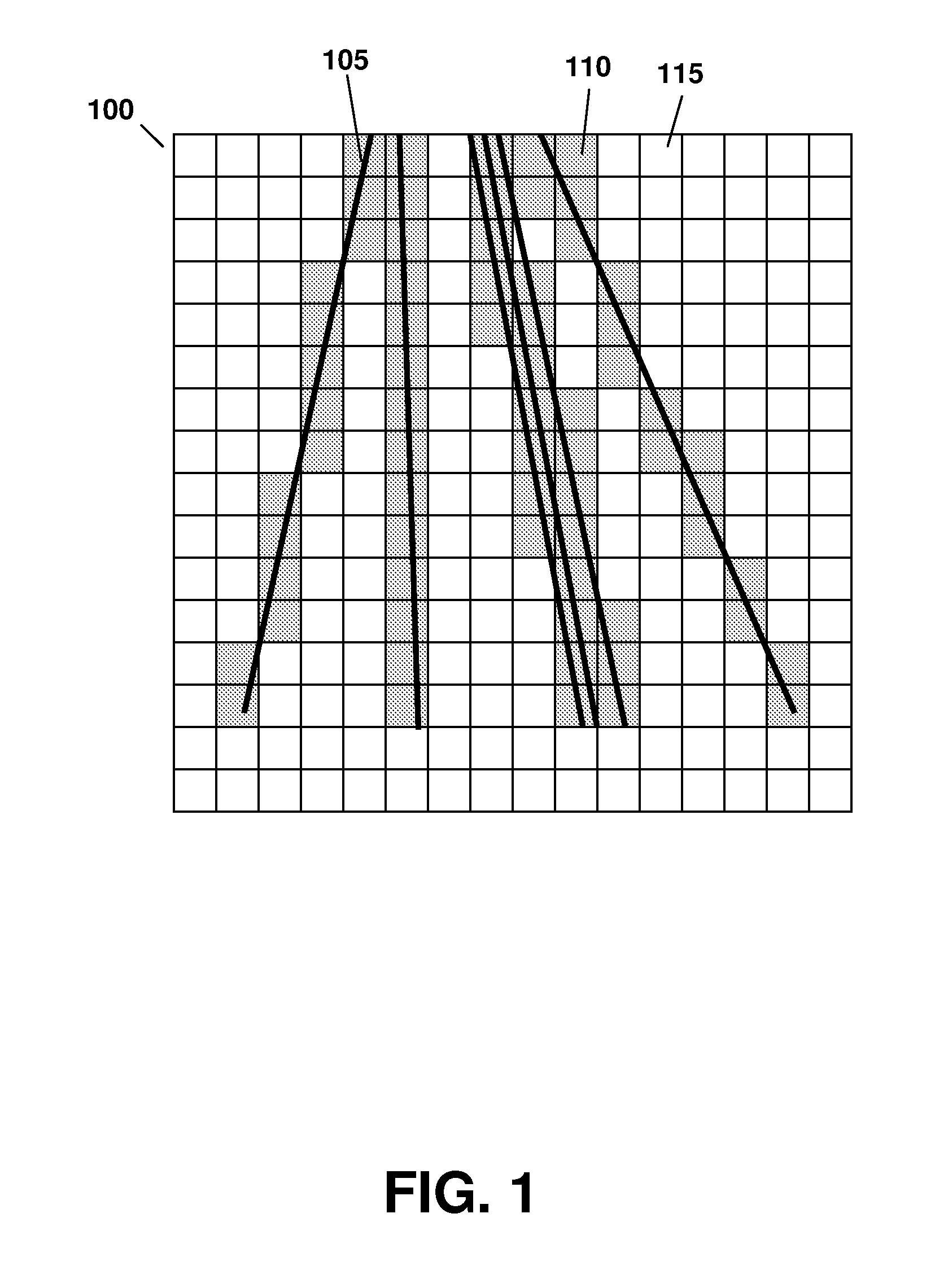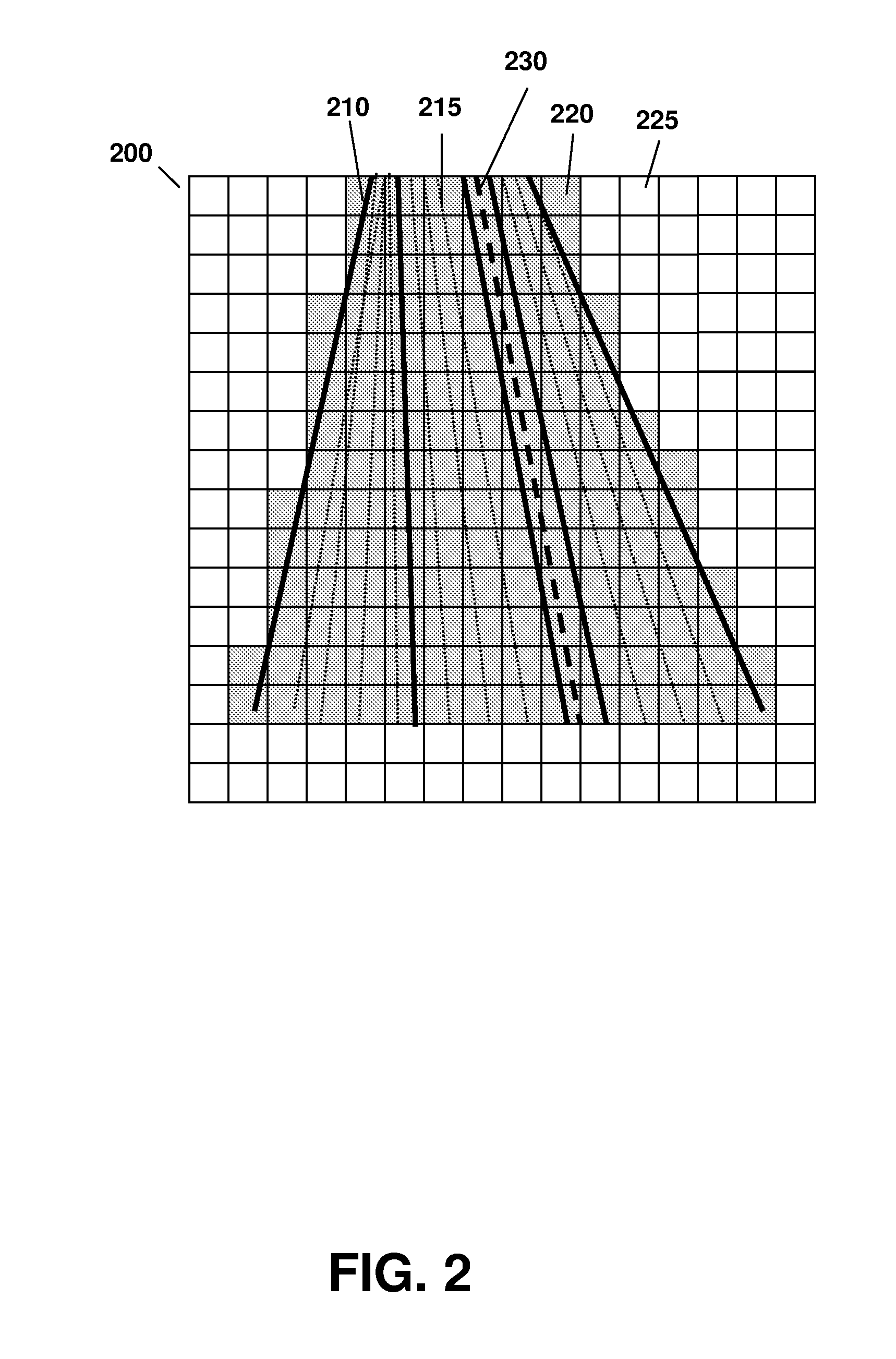Systems and methods for constructing images
a three-dimensional representation and image technology, applied in image data processing, diagnostics, applications, etc., can solve the problem that the value of the voxel between successive frames cannot be assigned to the intersecting image pixels, and achieve the effect of facilitating the rapid acquisition of accurate, reconstructed three-dimensional ultrasound voxel data
- Summary
- Abstract
- Description
- Claims
- Application Information
AI Technical Summary
Benefits of technology
Problems solved by technology
Method used
Image
Examples
Embodiment Construction
[0030]FIG. 1 shows a three-dimensional voxel grid or space 100 as a two-dimensional section for illustrative purposes. A series of two-dimensional ultrasound slices 105, each having positional and orientation information relative to the voxel space 100, has been projected therein. Each slice 105 intercepts a roughly two-dimensional region of voxels (the deviation of the intercepted region from perfect planarity increasing with the degree to which the interception angle is off-axis). Using conventional techniques, each voxel is “filled” by assigning a value based on the pixels from the slice or slices 105 that intercept the voxel. The voxels that may have values assigned in this way are illustrated as gray squares 110, whereas the white squares 115 (representing “holes”) cannot draw values from intercepting slices 105, and would typically be filled in a second processing step. Embodiments of the invention address the problem of filling voxels intercepted by the ultrasound slices as w...
PUM
 Login to View More
Login to View More Abstract
Description
Claims
Application Information
 Login to View More
Login to View More - R&D
- Intellectual Property
- Life Sciences
- Materials
- Tech Scout
- Unparalleled Data Quality
- Higher Quality Content
- 60% Fewer Hallucinations
Browse by: Latest US Patents, China's latest patents, Technical Efficacy Thesaurus, Application Domain, Technology Topic, Popular Technical Reports.
© 2025 PatSnap. All rights reserved.Legal|Privacy policy|Modern Slavery Act Transparency Statement|Sitemap|About US| Contact US: help@patsnap.com



